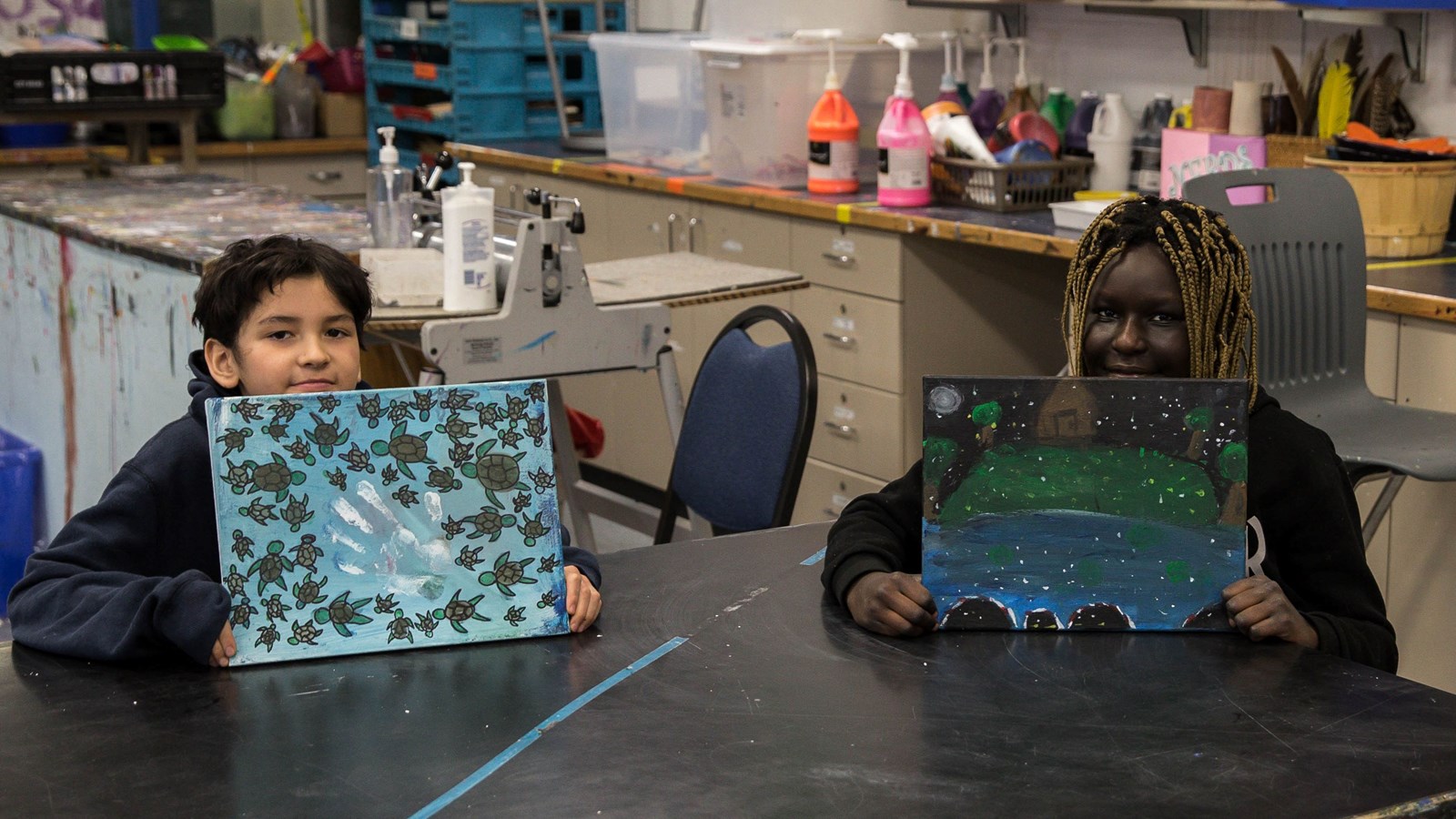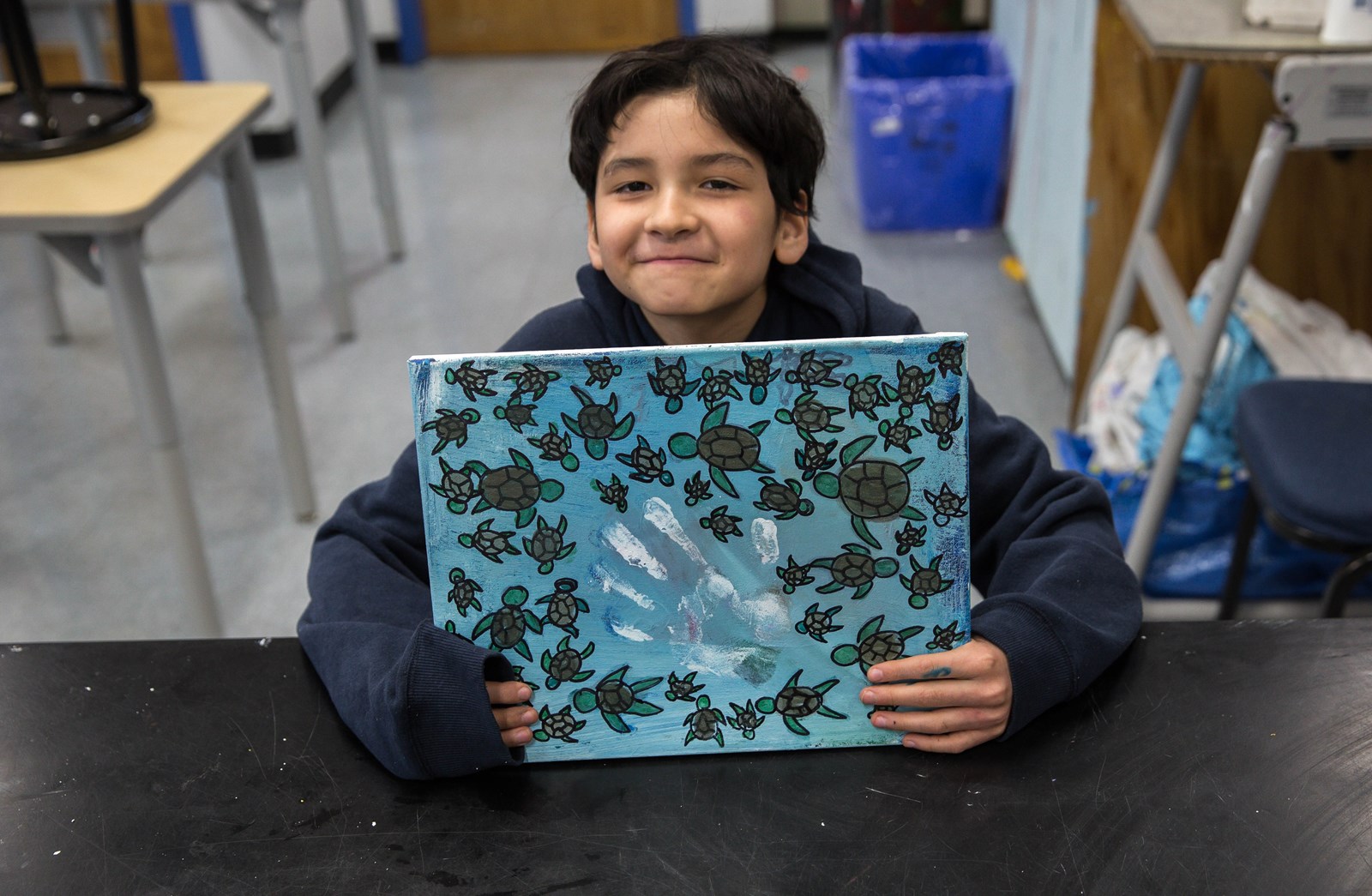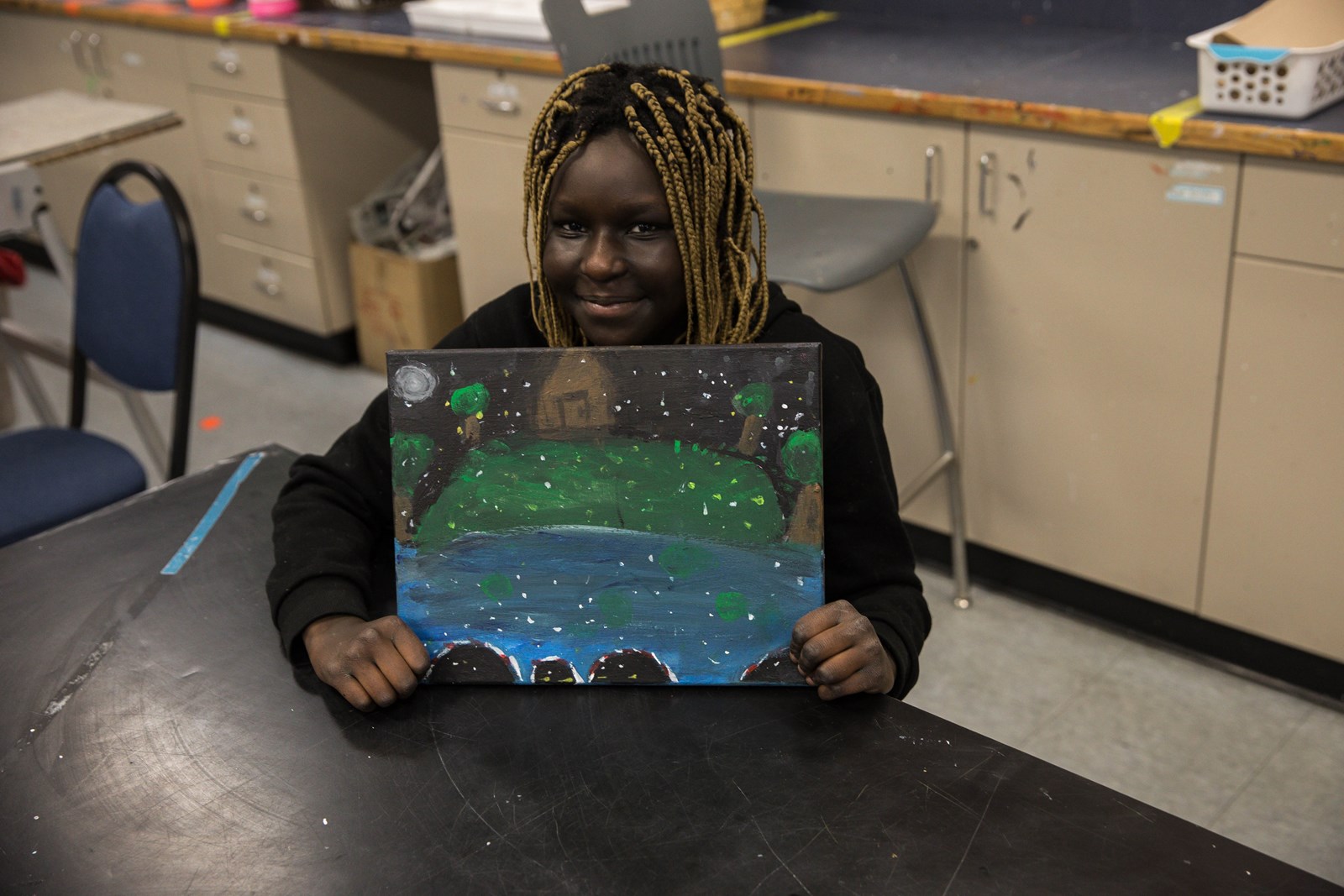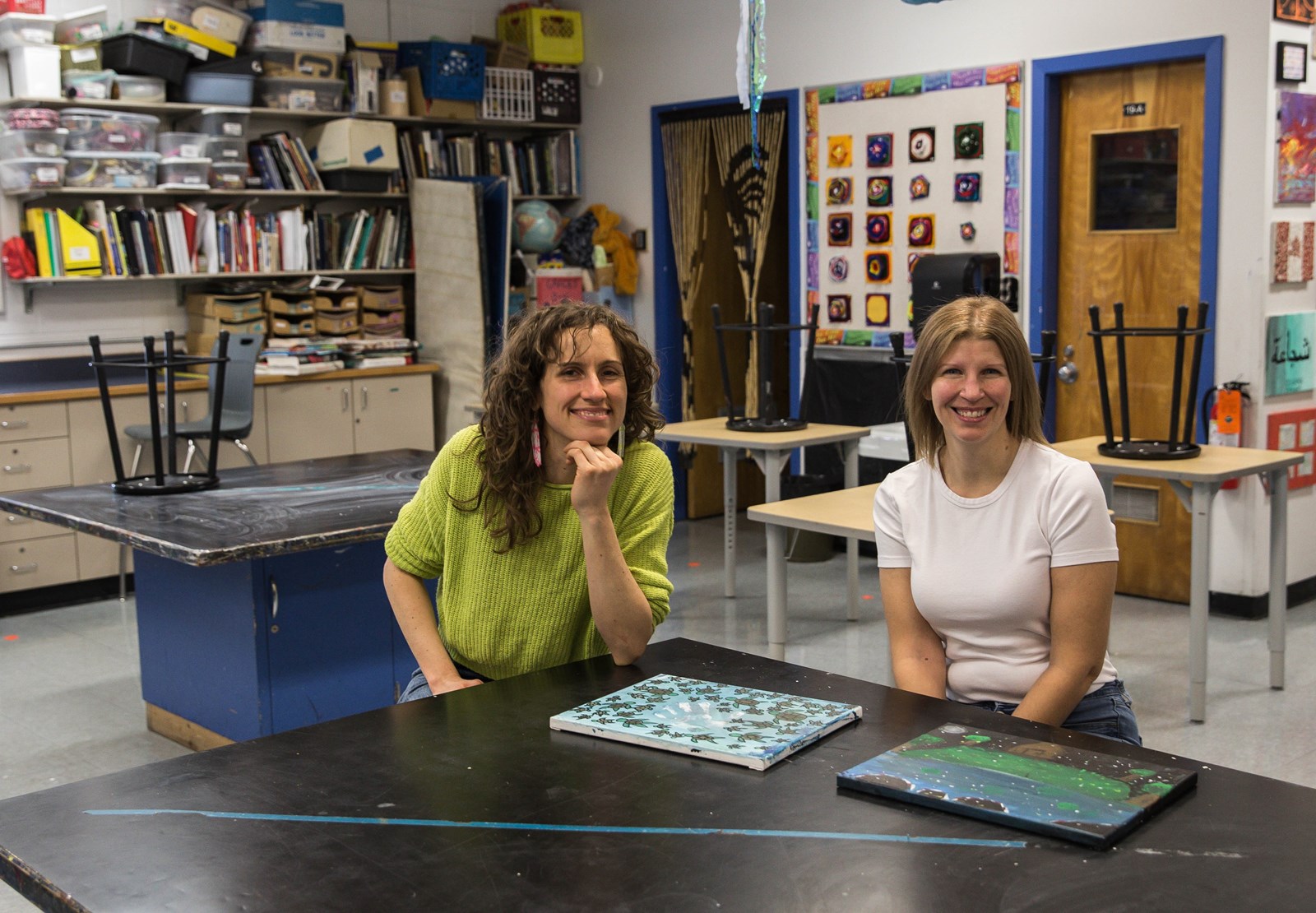Students at David Livingstone School are envisioning a reconciled Canada
April 4, 2022
Students at David Livingstone School are envisioning a reconciled Canada.
The Imagine a Canada Program is organized by the National Centre for Truth and Reconciliation. Students from Kindergarten to Grade 12 can submit a visual art piece, essay, poem or other creative project to represent a reconciled Canada.
On the strength of their submissions, 12 students from across Canada were chosen to participate in virtual leadership exercises from Elders, Survivors and Knowledge Keepers. Students will engage and lead difficult conversations about how they can be a Reconciliation leaders.
David Livingstone students A'Emilio Casarez and Jasmine Onam were the only applicants chosen to represent Manitoba for the Imagine a Canada Program.
Casarez submitted a canvas painting that depicts bright blue waters and turtles swimming in the seas; at the centre of the painting there is a handprint.
"It's peaceful and quiet, like a quiet place, and turtles swim in circles. The turtles are never mean, they're calm all the time," Casarez said. "Reconciliation means peaceful places like our homes, outside, and school. Watching the turtles, putting your hand in the water and swimming around can calm you down."

Onam’s canvas painting represents a quiet, safe place. She wants people to see that in this art, there is peace.
"To me, reconciliation means Canada apologizes to residential school survivors," Onam said.
Imagine A Canada asked all applicants what they would do to make Canada a better place. Onam said she would "like homeless people to have a home and food."
Casarez said "We can make Canada a better place by having clean water for all of us, cleaning up the sea and garbage in the cities. I want everyone to feel better by no more teasing or fighting and respecting where you live."

David Livingstone teacher Delia Jacob (who teaches Grades 5/6) and Visual Arts teacher Talitha Kaethler collaborated to lead the Imagine A Canada project at the school.
"These students are learning about reconciliation from a younger age," Jacob said.
Students began discussing what reconciliation means and what it looks like in Canada. Jacob and Kaethler asked students who they are, where they come from and where they are going as individuals. They also asked similar questions about Canada as a whole.
"Students were prompt to reflect through conversations; we had one-on-one conversations with students and whole-class discussions focused on students sharing their reflections,” Kaethler said. “Our students were doing vulnerable work by reflecting on their own identities and artwork."
Kaethler said all of the students created compelling work despite having a topic that was difficult to discuss.
"Sometimes, to put words to the things you've experienced or the things you feel is cracking open something terrifying. There is unbelievable talent in this community when it comes to the arts. The sense of truth sits deep and strong in this community. It's unbelievable," Kaethler said.
Jacob said she was proud in particular of Casarez and Onam: "These two students are such powerful individuals. Jasmine has silent power, and A'Emilio has strong vocal power."






